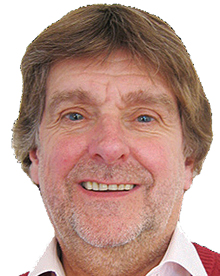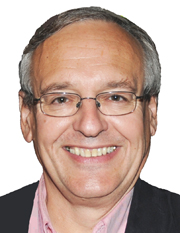Europe's online source of news, data & analysis for professionals involved in packaged media and new delivery technologies
Conference report - Beyond HD Masters

The latest in the series of 'Masters' conferences produced by industry trade magazine TVB Europe - Beyond HD Masters - highlighted the sizeable amount of work that the broadcast and consumer electronic industries have to do before 4K broadcasting can become a reality, says BILL FOSTER, Principal of Digital Decoded. However, that said, there was a high level of agreement that 4K broadcasting is not only feasible, but will become a reality later this decade.
There have already been several 4K trials, however as Sky Deutschland's Head of Innovations and Standards/Product and Operations - Technology, Stephan Heimbecher, pointed out in his keynote, these have all been proof of concept. A real time end-to-end broadcast signal chain that would enable live production is still some way off.
Heimbecher also made the point which would be repeated several times throughout the day - 4K is not just about more pixels, but better pixels. Along with higher resolution should come enhanced dynamic range, more natural contrast, better blacks and extended colour space. Higher frame rate is seen as another key requirement, particularly for sport.
4K is only really effective on larger screen sizes, but these present their own challenges. An 84-inch screen is more than 1m high, meaning that a person's head can be larger than life-size, not always an optimal experience for the viewer. There is also an argument to say don't move the camera, move your head, but this can be boring.
Sky Deutschland has experimented with using a 4K screen's increased size and resolution to deliver multiple images; in the case of football this can be different angles or even different matches, although in the latter instance handling the audio is a challenge.
In Heimbecher's opinion the main drivers of 4K will be extended colour gamut and higher frame rate, however the present infrastructure supports neither of these yet. Displays will require a faster connection, and HDMI 2.0 is expected to deliver that, although its limit, at least initially, is likey to be 50/60p. "I don't want to sound too negative," Heimbecher said in conclusion. "If we get it right it can be immersive."
Heimbecher's Sky colleague Chris Johns, Chief Engineer - Broadcast Strategy, BSkyB, agreed that more frames and more colours are needed. The added resolution delivers greater detail, and with 14+ stops moving from shadow to sunlight is less of a problem, however the camera sensors create other issues such as panning blur. Johns believes a new audio technology is also needed, but maybe not 22.2! Object-based audio is one option.
Depending on the frame rate, 4K could require up to 20 times the bandwidth of HD. This may necessitate some form of 'mezzanine' compression to enable the signals to be handled within a broadcast facility's existing infrastructure. [In the early days of HD the BBC used its Dirac codec to send HD signals over an SD infrastructure.] Sky is already acquiring in 4K but Johns was emphatic that there are no plans to launch a service at present. Agreeing with his colleague from Sky Deutschland, he closed by saying, "If we can get it right we can create a differentiator. The challenge is fast moving pictures."
Jack Wetherill, Senior Market Analyst at Futuresource Consulting, provided an analysis of the potential for 4K. He began by highlighting the pieces that need to be in place: the infrastructure, affordable TVs, content and, highly important, consumer pull. Currently it's industry push.
Demand for TVs peaked in 2010 at 51 million units - the flat panel market is now saturated and kids want tablets and PCs in their rooms, not TVs. There is a belief in the industry that 4K could extend the life of LED while it gets up to speed with OLED production. 4K panels could also help the market for passive and auto-stereo 3D TVs.
Just 700 4K sets were sold last year. These ranged in price from an 84-inch Samsung at £35,000 down to a 55-inch Toshiba at £7,000. Futuresource predicts 8,000 4K panels will be sold in Western Europe this year and by 2020 they will account for 50% of sales, although still only 10% of the total installed base. Prices are expected to have fallen below £1,000.
China is currently driving the 4K market in the 40-inch and above category. By 2017, 50% of panels sold will be 40 inches plus, but whether consumers can see the difference in a panel smaller than 60-inch is debatable.
Wetherill noted that 4K broadcast trials were conducted at the Roland Garros tennis tournament in Paris. [This is part of an Orange-led initiative called 4Ever.] However, e doesn't consider that in Europe 4K terrestrial broadcasting is really an option, the market will be driven by the pay-TV operators and potentially by a new generation of 4K-capable Blu-ray devices.
4K is not new, of course. Richard Mills, CTO of London-based facility OnSight reminded the audience that it has been used for cinema and high-end TV drama production for several years. OnSight has been working with the massive files generated by these cameras - over 1TB/hour from a Sony F65 and up to 450TB for a movie - since 2008.
Broadcast hardware for live 4K production and the construction of the world's first 4K multi-camera live OB truck were covered in a two-part presentation by Peter Sykes, Strategic Technology Manager, Sony Professional Solutions Europe, and Eamonn Curtin, Commercial Manager of OB facilities company, Telegenic.
Sykes revealed that Sony had sold 2,000 4K cameras by April 2013, a mix of the F65, F5 (which requires an external recorder) and the F55 with internal recorder. For live production a fibre interface is available for the F55 which carries raw data in the SMPTE format up to 2 km into a processor that can create HD or 4K in the required format for the switcher. Sykes noted that SES Astra's HEVC test broadcasts are at 20Mbps, about where HD was when it launched.
Curtin then gave an overview of the trial that is to take place during the upcoming Confederation Cup in Brazil. Telegenic's latest truck, which was on its way to South America as he spoke, will record three games, each one testing different camera positions and a combination of prime and zoom lenses to see what works best. This is a learning exercise for next year's World Cup; the results are unlikely to be broadcast. On hearing this one member of the audience commented, "With that amount of investment in a trial you must be serious [about 4K]."
The BBC will also be conducting 4K trials this year, but closer to home at Wimbledon. Shooting will be during the first week using two camera positions which will be occupied by 3D rigs for the second week of the tournament.
Duncan Humphries, Creative Content Director at Can Communicate, who has worked with the BBC on several 3D projects, highlighted that the lenses on 4K cameras can be a problem, particularly for sport. They work well for 'filmic' scenes but can't deliver the close-ups of players that are achieved with regular TV cameras.
Much of the rest of the day focused on the detail about 4K standards and the ongoing debate on the need for higher frame rates. Alan Bright, Director of Operations for equipment hire company Presteigne Charter, said that his company would not be making any major investment in 4K until the HFR issue was resolved.
Later in the day Andy Quested, Head of Technology BBC HD and 3D, commented that a higher frame rate [for HD] might slow down or even negate the demand for higher resolution. In any event, he believes that existing frame rates will continue to be needed for genres such as drama and natural history.
Whilst 4K is supported by H.264, it's successor HEVC (High Efficiency Video Coding, also known as H.265) is claimed to deliver a 50% saving in bandwidth and is considered to be a key element in the economics of broadcasting this new format. [The 50% figure is disputed by some who say it is currently nearer to 30% for typical content, but whatever the actual figure today it will inevitably improve over time as its predecessors have done.] Eutelsat's Michel Chabrol predicts that HEVC chipsets for HD 50/60p should be available in production quantities within a year and 4K set top boxes will be in the market by 2015.
During the conference wrap-up BSkyB's Chris Johns said that he considers higher frame rates will be a natural evolution, whilst colour depth improvements will require an evolution. "Keep calm and carry on" was his advice.
Chairman John Ive is to be congratulated on putting together a varied and informative programme. All in all an excellent day which provided many new insights into the world of 4K.
Bill Foster is principal of Digital Decoded. He has many years experience in the media and entertainment industry. Since the early 1980s he has enjoyed a reputation as a digital technology innovator and his skills, in particular his 'hands-on' experience, are now highly valued by companies in the media and entertainment industry, financial institutions and investors seeking a clear vision through today's era of rapid technological change. Contact: Bill [at] digital-decoded.com.
...
On predicting the future

Predicting the future, let alone the future of packaged media, is a perilous exercise, and possibly counter-productive, as the exercise closes doors rather than keep them open, argues JEAN-LUC RENAUD, DVD Intelligence publisher. Consider that: Apple was left nearly for dead 15 years ago. Today, it became the world's most valuable technology company, topping Microsoft.
Le cinéma est une invention sans avenir (the cinema is an invention without any future) famously claimed the Lumière Brothers some 120 years ago. Well. The cinématographe grew into a big business, even bigger in times of economic crisis when people have little money to spend on any other business.
The advent of radio, then television, was to kill the cinema. With a plethora of digital TV channels, a huge DVD market, a wealth of online delivery options, a massive counterfeit underworld and illegal downloading on a large scale, cinema box office last year broke records!
The telephone was said to have no future when it came about. Today, 5 billion handsets are in use worldwide. People prioritize mobile phones over drinking water in many Third World countries.
No-one predicted the arrival of the iPod only one year before it broke loose in an unsuspecting market. Even fewer predicted it was going to revolutionise the economics of music distribution. Likewise, no-one saw the iPhone coming and even fewer forecast the birth of the developers' industry it ignited. And it changed the concept of mobile phone.
Make no mistake, the iPad will have a profound impact on the publishing world. It will bring new players, and smaller, perhaps more creative content creators.
And who predicted the revival of vinyl?
(click to continue)... Read More...



















